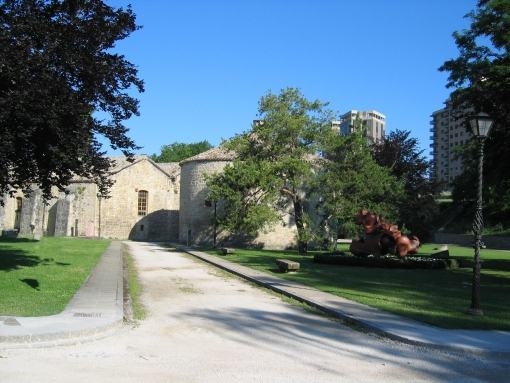Ivabradine and S18982 activities on heart rate: a population PK/PD analysis
Vincent Duval & Christian Laveille
Clinical pharmacokinetic department, IRIS, 6 place des pléiades, F-92415 Courbevoie Cedex
The ivabradine was developed for its heart rate decrease properties. The overall activity is related to both ivabradine and S 18982 (its active metabolite). Both entities have a similar intrinsic activity.
Aim: To establish the relationship between Ivabradine and S 18982 concentrations and heart rate in the phase II / phase III population.
Material and method: Population approach within NONMEM® Vers. V.1
Data: Eight phase II/III studies (1333 patients, 562 placebo & 771 Ivabradine ). Ivabradine and S 18982 concentrations were measured as well as three different types of heart rate measurements: At rest in supine position (HRsp), at rest in standing position (HRsd) and during the exercise tolerance test (ETT, bicycle or treadmill test): 68887 heart rate measurements and 7411 plasma concentrations were available.
The model(s): Four stages: Firstly, the PK models. Ivabradine and S 18982 PK were modeled. Estimated parameters were integrated in the PK/PD model by fixing the populations estimates, empirical Bayes estimates were estimated simultaneously with PD. Secondly the relationship between the heart rate and the increase of the effort was established based on data before treatment. Thirdly, the placebo effect was graphical investigated over the different periods. Lastly, the PK/PD model included the impact of the concentrations of both entities on heart rate.
Results: Ivabradine and S 18982 PK were described using two two-compartment models with a first order absorption or formation for S 18982. The relation between HR and the increase of the effort was linear for both bicycle and treadmill test. A scaling factor was estimated between HRsp and HRsd.
No placebo effect was demonstrated and no clear non-responder population was identified.
The treatment impact was modeled using one effect compartment for Ivabradine and one for S 18982. The two entities acted through an inhibition Emax model, with a similar Emax and two different EC50 expressed as a percentage of heart rte decrease.
Conclusion: Using the modeling approach, the information spread through the different phase II-phase III studies was combined in a single entity. It enabled to allowed to demonstrate a clear dose-response relationship between ivabradine administered dose and heart rate. This model was firstly, used through simulations to investigate any risk of serious bradicardya after Ivabradine administration in different situations. Secondly, it was also used as a basis to investigate the relationship between the Ivabradine plasma levels and the clinical end-point: Time to limiting angina (TLA), through a time-to event analysis.
